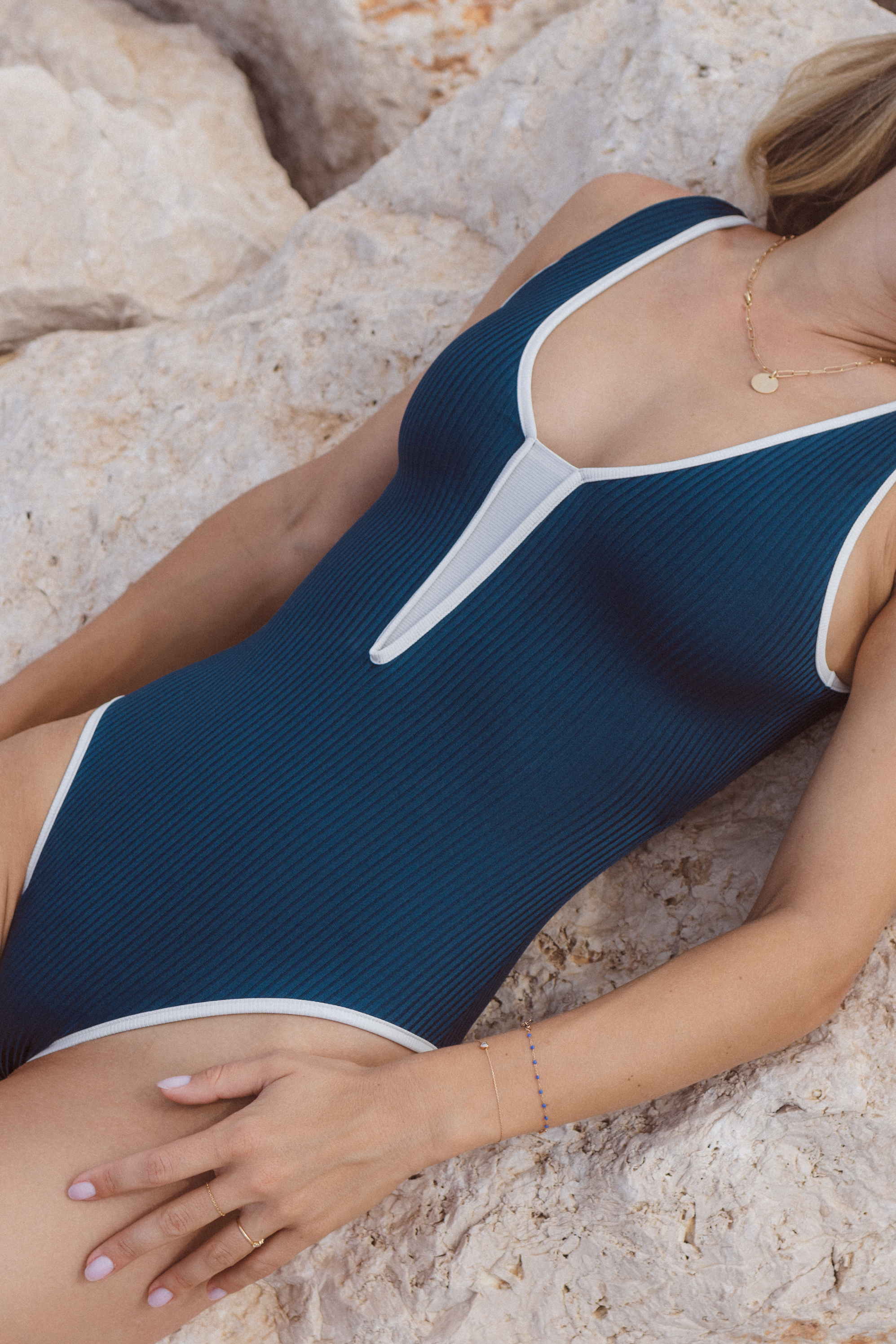Posidonia (Posidonia oceanica) is a flowering plant endemic to the Mediterranean that provides multiple ecosystem services. It forms vast meadows between the surface and 40 m deep. Thanks to Posidonia, we have transparent waters and white sand beaches where we can enjoy our pretty ethical swimsuits. It supports biodiversity and acts as a fish nursery. It prevents coastal erosion, produces oxygen and is a crucial carbon sink absorbing 7% of the islands' total carbon emissions. However, this ecological treasure is now in danger, through the action of man.
Posidonia threatened by pollution
In addition to providing important habitat for a wide variety of marine species, Posidonia plays a role in protecting our planet from the increasing buildup of carbon dioxide. It acts as a " carbon sink ", like terrestrial plants, by absorbing carbon dioxide from the atmosphere and thus helping to slow the effects of global warming .

Like tropical forests, seagrass meadows are threatened by the insatiable human need to expand, build and consume. These aquatic plants are increasingly being directly destroyed by trawler fishing, fish farming, the construction of new marinas and seaside resorts and the anchoring of pleasure boats. However, the greatest threat comes from land-based sources of pollution and in particular from nutrient loading in the sea (which corresponds to the release into the environment, by human activities, of nitrogen, phosphorus and other elements nutrients).
Scientists have found that nutrient loading is responsible for the deterioration of Posidonia. Nitrogen and phosphorus find their way into the sea from urban sewers, industrial outlets, agricultural areas, atmospheric deposition from agriculture, and the burning of fossil fuels. Nitrogen and phosphorus are the most important nutrients for regulating the growth of planktonic algae, and therefore the transparency of the water and the lighting conditions of Posidonia. But too much of these elements is detrimental to the aquatic flora, and will make your swims in a sustainable swimsuit less pleasant!
The different threats of Posidonia
Posidonia grows very slowly; about 1 to 5 centimeters per year. For this reason, the damage caused by a one-day anchor could take decades to be restored. In 2017, researchers estimated that the anchor of a 15m-long boat uprooted about 165 Posidonia shoots in Portocolom; and that it would take 5 years of optimal conditions to regenerate them. This single action released 915g of carbon into the atmosphere, adding to climate change. And this is just one example of the damage that a single unconscious act of anchoring on seagrass beds can cause.

Project this into the rest of the Balearic Islands and you will soon realize that action is needed without further ado. A study revealed that the Posidonia meadows in S'Espalmador (Formentera) were reduced by 44% between 2008 and 2012, mainly due to the impact of the anchoring of boats. And then, a few years ago, there was the documented event of the 116 meter Turama boat in Formentera whose damage will take almost a thousand years to repair.
In addition to uprooting the plant, anchoring and boat activity also increases water turbidity (its ability to scatter or absorb incident light), making it harder for the plant to access light. it needs to photosynthesize and survive. This is why poorly treated water is another of the main threats to Posidonia meadows. Unfortunately, there are still several Posidonia bays and meadows in Mallorca that suffer from the impacts of poor water quality. Action is also needed and urgent to resolve this problem.
The third major impact on Posidonia is climate change . Warmer waters increase Posidonia mortality. Indeed, if anchors and sewage weaken the plants, the Posidonia meadows are more vulnerable and less able to cope with climate change. The protection and recovery of seagrasses is therefore more essential than ever, because they are our underwater forests. It is therefore important that everyone leads the fight to preserve the environment at their own level, starting for example by buying an eco-responsible swimsuit for the beach.



